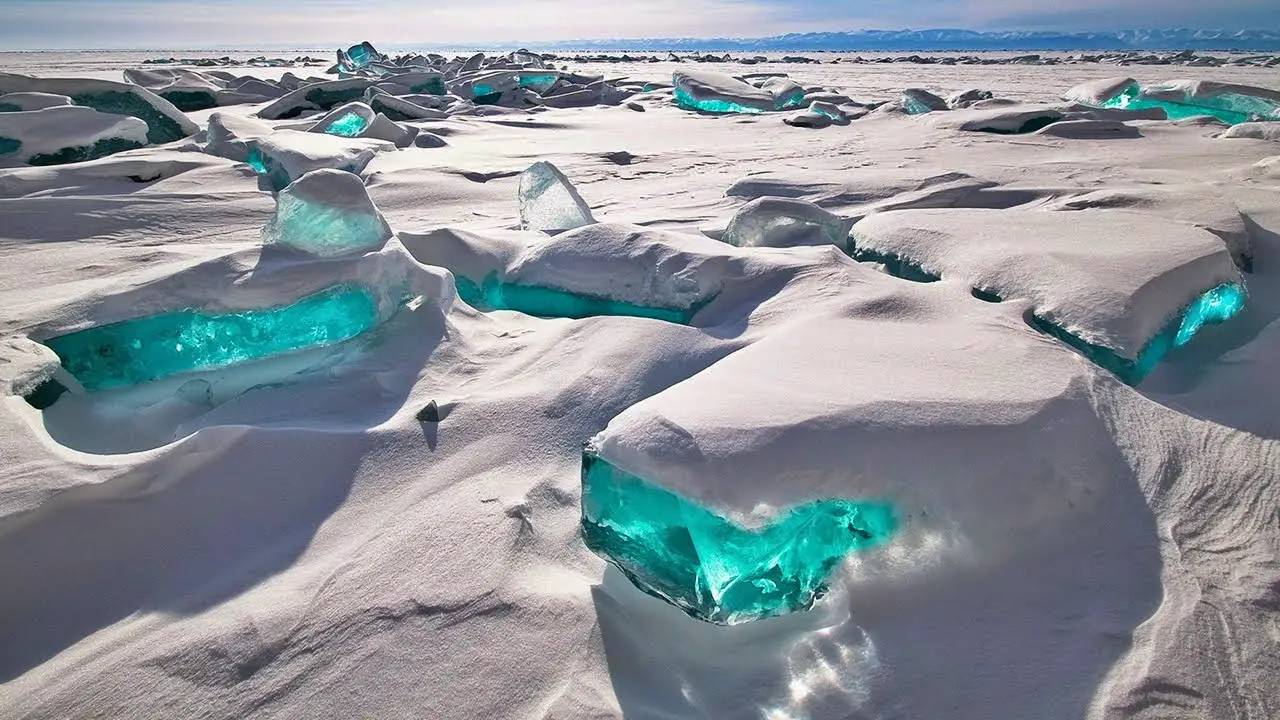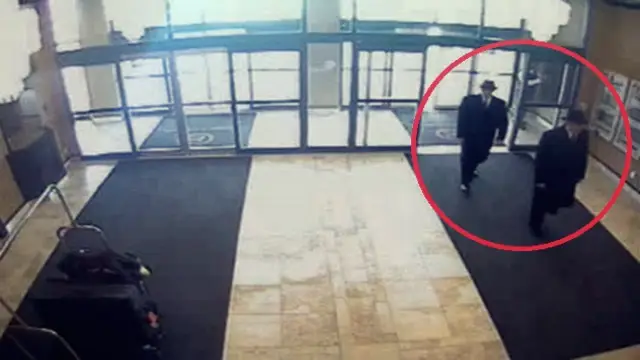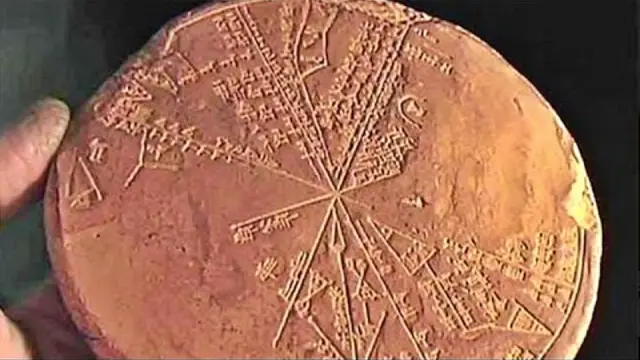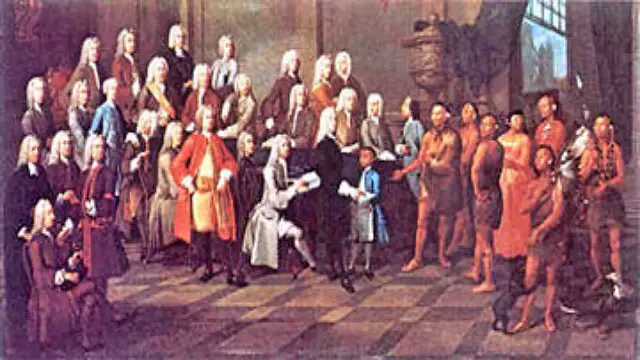Mystery of The Crystal Skulls
Skulls are the most common representation of death in human civilization and a potent symbol in peoples’ visual lexicons all across the world.
One of the most fascinating topics of 20th-century archaeology involves thirteen crystal skulls of what appears to be ancient provenance that have been discovered in various parts of Mexico, Central America, and South America.
Key Points
These skulls, which were discovered close to the ruins of the Mayan and Aztec civilizations and have some evidence connecting them to earlier civilizations in Peru, are a mystery on par with Stonehenge, the Pyramids of Giza, and the Nazca Lines.
It is estimated that some of the skulls are 5,000–36,000 years old.
While many native people talk of these substances’ amazing magical and therapeutic powers, neither their origins nor their original use are well understood.
Were they left behind after a former world, like Atlantis, was destroyed?
Do they actually let us to glimpse deeply into the past and forecast the future, or are they just clever modern fakes?
The skulls are the subject of extensive research at the moment.
However, it is still unclear where they came from.
They appear to defy reason.
Everything we know about lapidary work suggests that the skulls should have broken, fragmented, or disintegrated when they were carved.
Well-known crystal skulls
The known past of crystal skulls, numerous hypotheses regarding their origins, and any potential mysteries they hold are all examined in this research.
Crystal skull from Mitchell-Hedges
The Mitchell-Hedges Skull is the most renowned and enigmatic crystal skull, and there are at least two strong reasons for this.
First of all, it has a shape that is remarkably close to a real human skull, down to the fitted replaceable jawbone.
The majority of known crystal skulls have a more stylised structure, frequently with teeth that are simply etched onto a single skull piece and exaggerated characteristics.
Second, the Mitchell-Hedges skull’s construction method is unknown.
Technically speaking, it seems to be an object that even the most skilled sculptors and engineers of today would be unable to reproduce.
Amethyst skull with Mayan crystal skull
The Mayan Crystal Skull and the Amethyst Skull are two further examples of primitively fashioned skulls.
A Mayan priest brought them to the United States after they were found in Guatemala and Mexico, respectively, in the early 1900s.
The Mayan skull is clear, and the Amethyst skull is formed of purple quartz, but other than that, they are quite similar.
Both of them were examined at Hewlett-Packard and, like the Mitchell-Hedges skull, it was discovered that they were strangely sliced against the crystal’s axis.
Crystal skull from Texas (Max)
The Texas Crystal Skull, also referred to as “Max,” is a single-piece, crystal-clear skull weighing 18 pounds.
It is said to have come from Guatemala and been passed on to JoAnn Parks of Houston, Texas, by a Tibetan spiritualist.
The Parks family hosts public viewings of Max, and they exhibit the skull in exhibitions across the country.
Skull ET
Early in the 20th century, a smokey quartz skull named “ET” was discovered in Central America.
Its pointed cranium and pronounced overbite are characteristics that make it resemble the skull of an alien, hence its nickname.
Joke Van Dietan, who travels with her skulls to promote the healing abilities she thinks they have, owns a private collection that includes ET.
Crystal skull made of rose quartz
The Rose Quartz Crystal Skull, which was discovered close to the Honduras-Guatemala border, is the only crystal skull that resembles the Mitchell-Hedges skull even remotely.
It is significantly bigger than the Mitchell-Hedges and is not transparent in colour, but it has a similar level of craftsmanship, featuring a mandible that can be removed.

Origin Theories: Skulduggery or Celestial Gifts?
No of what otherworldly qualities the crystal skulls may or may not have, the question of their origin still needs to be answered.
Numerous theories contend that they are the result of a superior intelligence.
Many people think they were made by aliens or creatures from Atlantis or Lemuria.
One complex hypothesis contends that there are thirteen “master skulls” that hold the history of an advanced Inner Earth culture that dwells at the hollow core of our planet and left behind the skulls.
The most obvious solution to the puzzle is that the skulls were made by native artists, perhaps in Latin America or elsewhere.
Although some people don’t believe the Mayans could have created the skulls, it’s not just because of the technical challenge the task presents.
According to one idea, the Aztecs are a better possibility to have invented them.
In contrast to the Mayans, skull iconography is prevalent in Aztec art and sacred symbols.
The Aztecs were also better at creating sculptures out of crystal.
It’s possible that the skulls discovered in Mayan sites are actually relocated Aztec artefacts, or, as some people assume, this incongruity may show that some explanations for the origins of the skulls are untrue.
Many doubters believe that the crystal skulls are considerably more recent than the myths that go with them.
Since no one could have built them without using technologies that were only available in the past century, they believe that this is the best explanation for how they came into being.
A crystal skull cannot be carbon-dated, which only works on organic materials, hence it is impossible to know its exact age.
However, a recent study discovered plausible evidence of some skulls’ relative young.
A BBC documentary programme called “Everyman” aired a story in May about research done at the British Museum on a number of crystal skulls and other artefacts with allegedly ancient origins.
Two of the skulls had straight, evenly spaced surface scratches, indicating the employment of a modern polishing wheel, the researchers discovered using electron microscopes.
Since they were polished by hand, authentic old artefacts would have random little scratches.
According to the findings, these skulls were likely produced in Germany within the last 150 years.
Even the majestic Mitchell-Hedges cranium has been the target of terrible fraud allegations.
Some people think that F.A. Mitchell-Hedges had the sculpture made on commission by a sculptor and then hid it among the ruins of Lubaantun as a stunning birthday present for his daughter.
This claim may or may not be true, but even if it is true, the Mitchell-Hedges skull’s structure is unusual.
Every crystal skull in existence was most likely created by a simple human being of some kind, and whether the task was done five years ago or five hundred years ago, we still don’t know how they accomplished it.
The Mysterious Crystal Skull

Few ancient relics are as thought-provoking as the carved quartz crystal skulls in the field of antiquities.
Due in large part to the fact that there are so few of these historical marvels of the globe that are available to researchers, very little is known about them.
These ancient works have attracted a lot of interest in recent years.
Few people knew that there were other crystal skulls outside the Mitchell- Hedges skull for a long time when the topic of crystal skulls was brought up.
It was undoubtedly not the only skull, although maybe having the best carving and being seen by the most people worldwide.
Indeed, there are numerous skulls of all sizes, from softball-sized to over forty pounds, scattered throughout the earth.
Only a small number of crystal skulls have been accurately verified as being old.
Within the previous five years, several have been carved.
Currently, a difficult technique of creating a mould of the skull and examining it under an electron microscope to look for minute carvings is the acknowledged verification by which a carved skull can be described as ancient.
The age of the carving can be estimated using these markings as hints.
As a result, the antiquity specialist is able to authenticate the age based on techniques utilised on other known works that span from the very ancient to the very modern. The telltale pattern of the marking will prove what process was used to carve and polish the skull.
A timeline is created by comparing these numerous techniques with the crystal skull’s results, which will position the skull along that timeline.
One of the most exquisite skulls I have ever had the pleasure of seeing, the well-known Mitchell-Hedges skull is currently clouded in dispute and is located in Canada.
Currently, it is believed that the skull is not old, but rather a more contemporary creation, maybe planned by F.A. Mitchell-Hedges to generate interest in and funding for his exploits.
The nickname “Skull of Doom” was really misnamed for the phrase “Skull of Dunn,” which was in usage in the 1930s and was coined by some of the adventurer’s friends.
In 1927, when young Anna Mitchell-Hedges, then age 17, reports finding the skull in the ruins of a temple, Dunn was a member of F.A.’s expedition to Luubantun.
The Aztec Skull, a crystal skull, is kept in the Museum of Man in London.
That museum no longer has it on exhibit.
The skull is encased in a glass display, but both museum staff and tourists report that it moves on its own.
At the turn of the century, a New York antiquity dealer sold it to the museum.
The Aztec Skull, a crystal skull from the Paris Museum of Man, is also there but is no longer on exhibit.
Both the Paris Skull and the British Skull are considerably smaller and less clearly carved than the Mitchell-Hedges skull.
Numerous quartz crystal skulls have surfaced more recently.
Some are claimed by their owners to be ancient.
But after further study, it was found that many of these skulls were not at all old.
Regarding the origin of these imposters, nothing is definite.
A human-sized quartz crystal skull was discovered in Texas around the beginning of the 1980s.
It was in the care of a Tibetan healer named Norbu Chen.
Carl and Jo Ann Parks received the skull as payment for their obligation.
In their Houston home, the skull was put in a cosmetic case and kept there on the bottom of a closet for a while.
Jo Ann Parks became aware that her skull might be a significant artefact as she was watching television.
F.R. Nick Nocerino, a famous authority in crystal skull study, was a guest on the presentation, which was about the Mitchell-Hedges skull.
Jo Ann phoned Nocerino after watching the episode, and he flew from his home in the San Francisco area to Houston to inspect the skull.
He came to the conclusion that the skull was genuine and quite old.
Although he was aware of the skull’s existence, he was unable to pinpoint its exact position.
After several conversations with the “rock,” as Jo Ann affectionately referred to it, soon after Nocerino’s visit, she learned its name was Max.
Joke van Dieten Maasland, who now resides in Miami Beach, Florida, bought a smoky quartz crystal skull from a trader in Los Angeles around the same time.
This skull reportedly belonged to a family in Guatemala, whose parents discovered it in 1906 while excavating a Mayan temple.
Joke attributes the “E.T.” skull’s role in her own personal recovery from a brain tumour.
In her book, Messengers of Ancient Wisdom, she tells the tale.
Early in 1990, a hollowed-out rock quartz crystal skull weighing more than 40 pounds was donated to the Smithsonian Institution in Washington.
There was scant or no documentation supporting its veracity.
The curator decided not to display the skull in the museum until its legitimacy was confirmed because there was no verifiable proof of its age or place of origin.
Nocerino was asked to help find the hidden remnants of an ancient city while on a lecture tour in Mexico many years ago. The location was in Guerro Provence.
The information regarding the site of what Nocerino believed to be an old temple was given during this visit.
The safety of those now working on this dig would be jeopardised if I disclosed the precise location of the excavation or the name of the city (due to the current political climate in Mexico).
Later, additional carved crystal items were discovered during that area’s excavation.
Two crystal skulls were found among these relics, one of which is now in Nocerino’s possession and weighs 13 pounds, 3 ounces, and is sculpted from transparent quartz crystal.
The skull is given the name Sha-Na-Ra by Nocerino in honour of a Shaman Healer he once knew.
The second is currently in the possession of DaEl Walker, a renowned crystal researcher and writer of numerous books on crystal healing.
It weighs around 9 pounds less than Sha-Na-Ra and is also made of quartz crystal.
Due to the spectrum of hues that dance through the skull while in natural light, DaEl refers to it as The Rainbow Skull.
At this site, numerous other artefacts were discovered.
There were several tiny crystal skulls with intricate carvings, hollowed-out skull halves, and an extremely uncommon and potent object known as The Jaguar Man.
It is made of quartz crystal, has a two-inch diameter, and is five inches high.
It shows a Jaguar’s head with a man’s head in its mouth.
The man’s facial features don’t look Mayan.
I currently hold this piece, and it is the subject of a thorough investigation.
Additional discoveries are anticipated as excavation in this area continues.
A research project and movie documentary were initiated by The Pelton Foundation of Applied Paranormal Research, The Institute of Psychic and Hypnotic Sciences, and The Society of Crystal Skulls, International, using the skulls from the Rainbow, Sha-Na-Ra, E.T., Jesuit, Max, and the Agate Chip.
In an effort to learn more about the skulls using these techniques, members of the various organisations who were knowledgeable in psychometry, scrying, and gazing were invited in to work with the skulls.
More than two genuine, hand-carved quartz crystal skulls being present in the same room at the same moment would be unprecedented in history.
Our study includes frightening close-up video of the skulls as well as laser light penetration to identify if any were cracked or had been more than one piece and put together.
In our production Skull Trek: The Journey of the Crystal Skulls, you can see the outcomes of the project’s first phase.
16 additional crystal skulls are also covered in this production, including the Mitchell-Hedges, Paris, British, Marin, San Jose, and Amethyst skulls, to name a few.
There are also portions of the scrying sessions available.
Scrying and psychometry allowed for magnificent simulations of ancient rituals as well as views into the past.
One of the sessions also revealed a connection to the mythical Atlantis.
What purpose did these lovely things serve?
Who did the carvings?
Is it possible for modern society to use their knowledge for emotional and physical healing?
The answers might come from additional research.
Maybe all it will do is raise more questions!
I came upon a phenomenon during my personal study of the skulls that I am still looking into.
I used a variety of colours and sounds while doing scrying on the skulls.
I set the skull atop a little light box and painted the light source opening in a variety of colours in alternation.
I started a review of the outcomes after documenting my sessions over a period of several weeks.
I was surprised to see that using a particular colour over a light source seemed to trigger a given time period.
I did more research on my findings and discovered, for instance, that whenever I utilised the colour blue, I would automatically return to the same time period.
I was so close to continuing the session I had just finished with that exact hue.
These skulls emit an incredible amount of energy.
Do they actually possess human knowledge?
They were left behind by extraterrestrial intelligence, right?
Some of these skulls are thought to be 100,000 years old or older.
Without old records, psychometry might be the only method that can be used to gather the data.
Every day, we do new studies.
The BBC, the British Museum, and Everyman Productions, all of London, conducted tests on three crystal skulls in April 1996 to establish the age of the caning using an electron microscope.
Sha-Na-Ra was requested to come with Nick Nocerino.
Max was invited to come with Carl and Jo Ann Parks.
The Smithsonian Institution was invited to bring their 40-pound skull, while the British Museum offered their Aztec skull.
A skull from Guatemala, an ancient gold and silver-plated reliquary cross that rested in a crystal skull with a skull carving, and a small skull were also present.
Additionally invited was Anna Mitchell-Hedges.
She, however, objected.
The BBC created a documentary about the testing.
The museum staff was shocked by the findings.
The Smithsonian and British skulls were found to have been sculpted using extremely modern techniques from the 1800s, not ancient ones.
Max and Sha-Na-Ra were also looked at.
While the museum’s administrators declined to publicly comment on the findings, an ancient expert that the museum’s officials had brought in secretly disclosed that the technique used to carve Max and Sha-Na-Ra was in use more than 5000 years ago!
A fake skull was displayed in the British Museum.
The skull in the Smithsonian was a fake.
The skull of Mitchell-Hedges?
We’re curious as to why Anna objected.
Her only remark was that it had already undergone sufficient testing.
Although a date has not yet been announced, the BBC showed their documentary in July 1996, and it will be broadcast on American television.
The BBC stated that they had never broadcast a programme in this series with a larger audience in a letter to me from Everyman Productions in London.

The study project led to the creation of a documentary with the working title
As mentioned in this edition of Atlantis Rising, Skull Trek: The Journey of the Crystal Skulls can be obtained at Pelton Publications.
You can get more information on the crystal skulls by writing to F.R. Nick Nocerino, Pelton Publications, or F.R. Nick Nocerino at P.O. Box 302, Pinole, CA 94564, or by getting in touch with Carl and Jo Ann Parks directly in Houston, Texas.
Max and Jo Ann travel extensively.
You can get her appearance schedule from her or Pelton Publications.
Direct contact with Joke van Dieten is possible in Miami Beach, Florida.
She is currently on the road with E.T., Sha-Na-Ra, The Rainbow Skull, and The Jaguar Man are not on display, but Mr. Nocerino or I at Pelton Publications can provide you with further details about these items.
The Crystal Skulls’ history
In the latter half of the 19th century, the crystal skulls first came to the attention of the general public.
At this time, numerous museums around the globe started to show an interest in exhibiting artefacts from ancient civilizations (such as Egypt, Greece, Mesoamerica, etc.).
The Museum of Man in London (for our British readers) had a clear quartz skull on display in 1898, while the Musèe de l’homme in Paris (for our French readers) had one in 1878. Both were displayed during the 1860s, when France occupied Mexico, and were allegedly discovered or acquired by Soldiers of Fortune, who were linked to Mayan sites in this nation.
But during the course of the research for our upcoming book, “Journeys of a Crystal Skull Explorer,” which will be available both as an e-book and a printed book this year, we discovered that there were a number of other old and ancient crystal skulls that were discovered in a variety of ways during this same century and eventually found their way (after passing through a variety of hands) to specific individuals who are well-known today!
More crystal skulls were discovered in the early 20th century, mainly near ruins or locations associated with ancient Mesoamerica:
The “Mitchell-Hedges Crystal Skull” is a human-sized, clear quartz, removable jaw, nearly exact replica of our own modern skull, and is currently in the possession of Anna Mitchell-Hedges in Canada. It was named after renowned explorer and adventurer F. A. Mitchell-Hedges and found in Lubaantum, an ancient Mayan city in Belize, in 1924.
The only human-sized ancient crystal skull made of smoky quartz that resembles a “ET” shape was found by a Mayan family near Guatemala in 1906 while they were excavating on their property; this skull was bought by Joke Van Dieten in 1991 through a crystal shop close to Los Angeles; it now travels the world and was displayed at a significant Mysterious Objects exhibition in Vienna in 2001;
Max: a clear quartz crystal skull weighing 18 pounds (9 kilogrammes), allegedly found in a Mayan tomb in Guatemala between 1924 and 1926.
After being donated by a Mayan Shaman to a Tibetan-trained lama in 1970, the skull was used in a healing facility in Houston, Texas, and after the lama’s passing, it was given to Carl and JoAnn Parks, who utilise it as part of their main tour in the United States.
The name was revealed after a psychic exchange between the skull and Mrs. Parks in which the skull revealed that this was the name.
“Ami,” the skull made of amethyst crystal:
Uncertainty surrounds its past. It is said to have been part of a collection of crystal skulls owned by Mexican President Diaz between 1876 and 1910, but there are also claims that the skull was found in the Oaxaca region of Mexico and passed down through a Mayan priest order from generation to generation.
The skull is currently housed in San Jose, California, where a group of merchants are selling it.
Of course, there are many other crystal skulls that are thought to be “ANCIENT” or extremely old, but this quartet serves as a decent example.
What makes the Crystal Skulls so significant, then?
I will only offer a few ideas or thoughts for the readers because it would require an excellent book (like the one we are writing) to be able to answer this question:
“The ancient Crystal Skulls are the computers of the ancients; they hold crucial knowledge that aids humanity in overcoming its current set of difficulties and ushering in a Golden Age.”
Ancient civilizations like the Mayans or the Atlanteans used them as a strong tool for healing [Body Mind Spirit].
“Today, we have seen countless instances of people’s lives being profoundly changed when they have had the chance to be in the presence of a “ANCIENT” crystal skull (healing of all forms of illness, expansion of one’s spiritual awareness, bringing to a head emotional or mental blocks, being a catalyst for a positive change in a person’s life, and the list goes on), or even now, this phenomenon is starting to happen around the “NEW” crystal skulls.”
Has any study been conducted to comprehend the skulls?
Yes, the California-based Crystal Skull Society International has been conducting some fascinating research under the direction of crystal skull authority F. R. “Nick” Nocerino for close to 60 years.
Additionally, a group of us established the World Mystery Research Center (located in the United States and Holland) in 2001, where we started concentrating on two aspects relating to the crystal skulls:


















